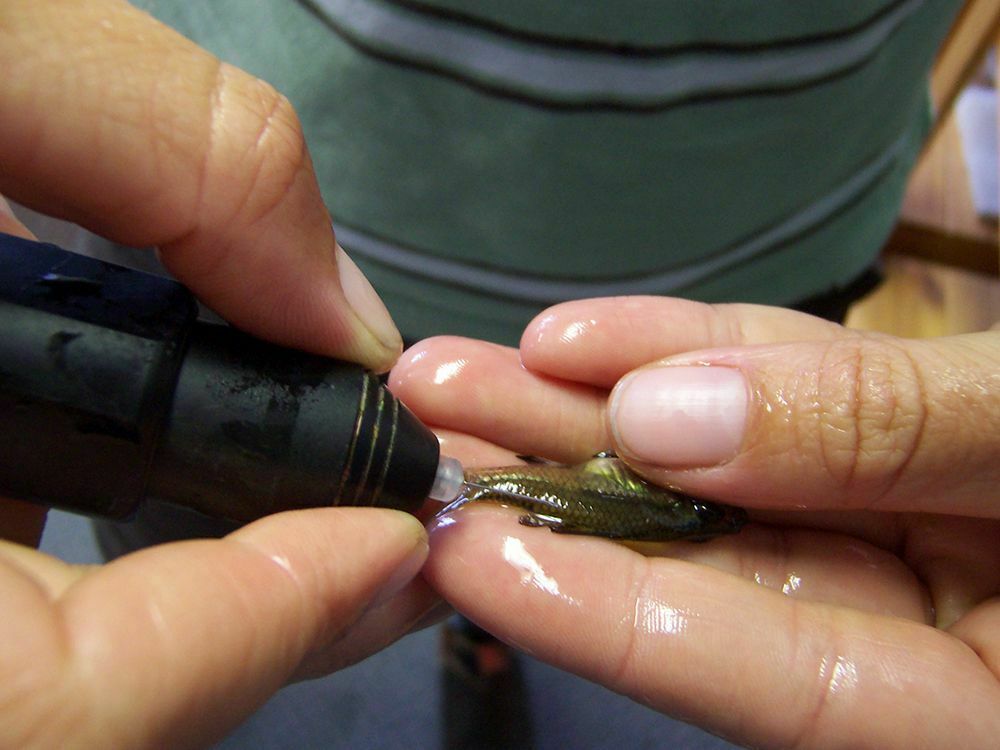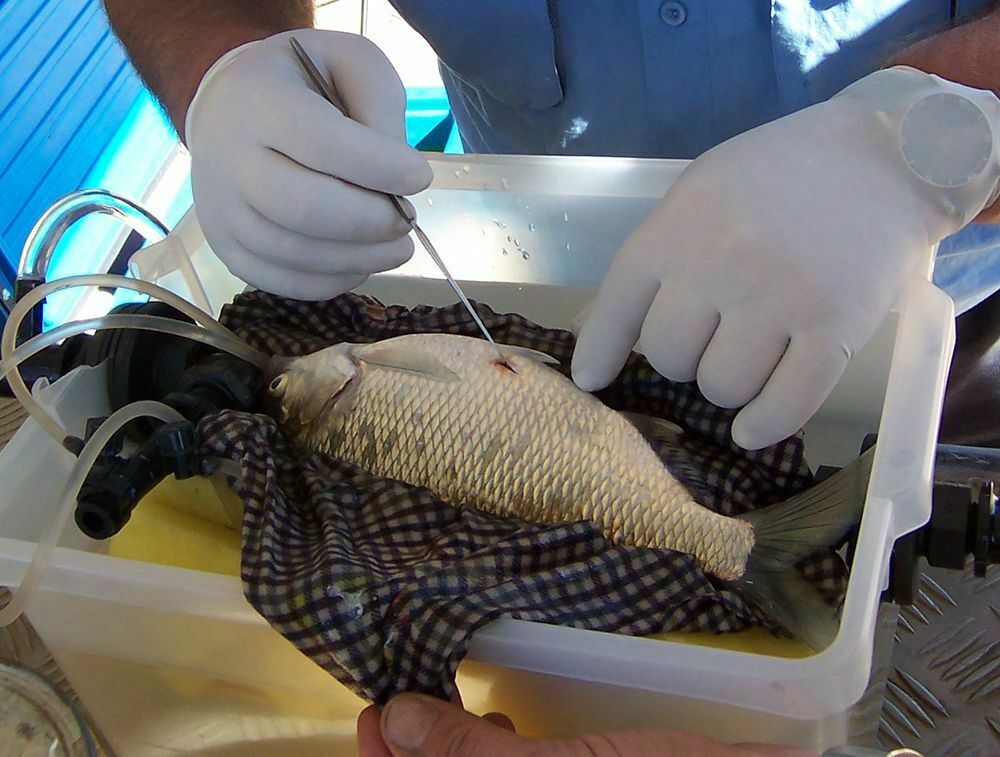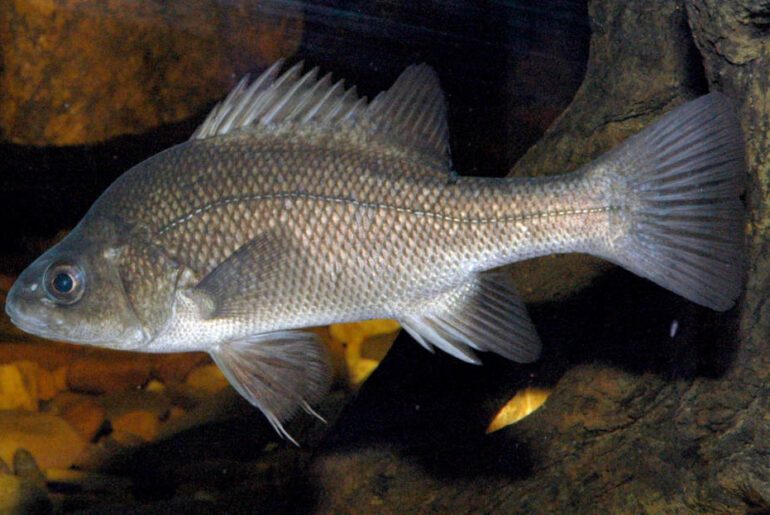To manage fish effectively it is important to understand their requirements for movement at different scales. Information is available on the larger scale movement requirements of adults of larger species in the Murray-Darling Basin (MDB), but prior to this project not much was known about the smaller or rarer species or early life history stages of larger species.
This project aimed to investigate mesoscale movement (movement beyond a single river meander or pool riffle sequence, or the movement between the river channel and its floodplain) for several MDB fish species and/or life history stages for which there is little existing information. This included an investigation into both longitudinal (up and down the river) and lateral (between the river and floodplain) movements and possible movement triggers. Through a combination of conventional tagging, radio-telemetry and standard electrofishing and fyke netting techniques, the movement of a range of northern MDB fish species was studied
Findings:
During the study, type of flow (natural or artificial), moon phase and time of year were found to be associated with movements of fish species. Carp gudgeons (Hypseleotris spp), Bony herring (Nomatalosa erebi), Spangled perch (Leiopotherapon unicolor) and Golden perch (Macquaria ambigua) sub-adults and juveniles were more mobile on natural flows than on flow releases from dams.
Migrations of these species may be stimulated by odours in run-off from terrestrial ecosystems (floodplains). On falling flows, there was a tendency for downstream migration by Carp gudgeons, Bony herring, and Spangled perch of all sizes, Golden perch (sub-adults and juveniles), Dwarf flathead gudgeon (Philypnodon macrostomus) and Hyrtl’s tandan (juveniles) (Neosylurus hyrtlii). This may have been to avoid stranding.
Only a small proportion of the Murray-Darling rainbowfish (Melotaenia fluviatilis) population appeared to move. Of those that did, most headed upstream. In contrast to other species, Murray-Darling rainbowfish were most mobile during artificial flow releases. They may prefer clearer water for movements associated with courtship displays and breeding.
In most species of fish, adults had more of a tendency to move upstream and juveniles downstream. This trend was very strong in Hyrtl’s tandan. Most native species displayed diminished movement behaviour during the winter period, corresponding to periods of least flow in the northern MDB.
Peak movement occurred in spring for Carp gudgeons, Spangled perch, Hyrtl’s tandan, Olive perchlet (Ambassis agassizii) and Murray-Darling rainbowfish. For adults of these species, movement was generally in an upstream direction. These movement are believed to be associated with their reproductive strategy as many fish collected at this time were reproductively ripe.
Peak movements of juvenile and sub-adult Golden perch and Bony herring occurred during autumn. In the northern MDB, such behaviour would be a useful adaptation to enable dispersal to refuges prior to the onset of the winter and early spring dry season.
Carp gudgeon were recorded moving up to 13 km upstream and more than 5 km downstream. Evidence suggests that Spangled perch, Bony herring, Dwarf flathead gudgeon, juvenile and sub-adult Golden perch also make upstream movements in excess of 10 km. Downstream movements up to 2 km were recorded for Spangled perch and up to 5 km for Bony herring. Downstream movements of hundreds of metres were recorded for juvenile and sub-adult Golden perch and Hyrtl’s tandan.
Key messages:
It is very important that managers consider the upstream and downstream movement of small fish when prioritising weir passage investment. In particular, the prevalence of downstream movement for many species dictates that future fishway design should accommodate small-bodied fish, as well as the premier native sport fish and other large-bodied species.
There is a need for improved coordination by fisheries managers and water managers on different methods of delivering water to increase lateral connectivity. The potential benefit of delivering water from dams less frequently or more strategically, and in larger volumes to replicate natural flows, needs to be understood by fisheries and water managers. Increased flow delivery may be achieved by combining environmental flow releases with natural flow events or irrigation releases.
Lateral habitats (e.g. lagoons) may be important for reproduction and long term survival of some fish species and it is important to consider connectivity with the main channel when determining flow releases.
Full report here: Hutchison, M., Butcher, A., Kirkwood, J., Mayer, D., Chikott, K. and Backhouse, S. (2008) Mesoscale movements of small and medium-sized fish in the Murray-Darling Basin. Murray Darling Basin Commission, Canberra









